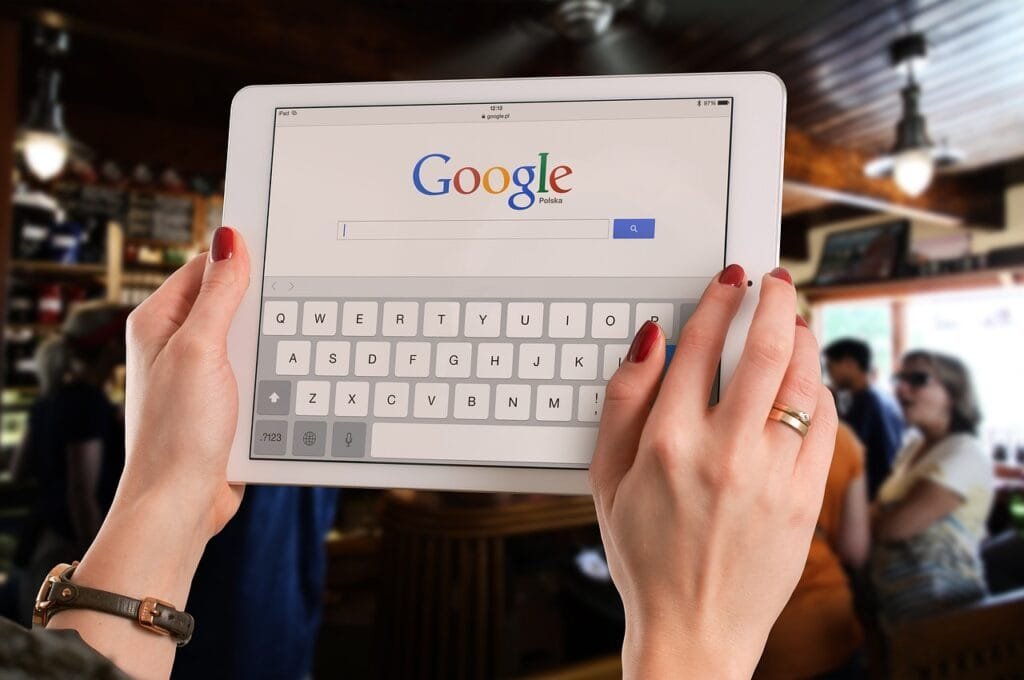Personal Care Marketing Strategies
Staying ahead in the personal care biz means nailing those marketing moves to keep customers coming back and amps up your brand’s spotlight. Two ways to play the game: tune into beauty buffs and get chummy with influencers.
Targeting Beauty Enthusiasts
To get in with the beauty crowd, you gotta know your people and where they hang out. Take Sephora, for example; they’re all about wooing makeup lovers, artists, and DIY fans, especially from Gen Z. They flood Instagram and YouTube with flashy stuff like makeup how-tos, product sneak peeks, influencer hookups, and long-winded product demos.
Here’s a quick peek at who’s into what when it comes to beauty:
| Bunch | What They’re Into | Where They Hang |
|---|---|---|
| Gen Z | Conscious of social issues, love trends | Instagram, TikTok, YouTube |
| Millennials | Authenticity and sustainability rule the day | Instagram, Pinterest |
| Professionals | Want efficient and high-quality stuff | LinkedIn, Instagram |
Knowing what these groups dig helps personal care brands shape their marketing to hit the mark. If you’re curious about shifting market vibes, check out stuff like personal care industry trends and personal care market research.
Leveraging Influencers
Riding the influencer wave is big in personal care ads. Social media has beauty talking points locked, especially with TikTok switching up the game plan for salons and product makers. Influencers boost how much people see and trust a brand because their followers tend to mimic their buying behaviors. A study shows that 62% of women keep tabs on beauty gurus online, making these influencers powerhouses in personal care marketing hype.
Getting influencers on your side broadens your reach and gets fans chatting. Influencers spin stories that hit home, leading to better sales kickbacks. It’s about keeping it real with genuine influencer partnerships for winning strategies in the personal care game.
Craving killer campaign ideas? Dive into personal care branding tips for ace strategies on teaming up with influencers and sparking audience interest.
Successful Digital Campaigns
Digital marketing’s found its groove in personal care ads, turning salon folks, spa directors, and cosmetic brand gurus into visibility wizards. Here’s the scoop on two gold-star methods: teaming up with other brands and getting interactive.
Brand Collaborations
When brands buddy up, magic can happen. Just look at Elizabeth Arden joining forces with Parisian illustrator Marie Assenat for the “Travel with Arden” gig. This campaign kicked off during the Chinese summer holidays, lighting up Hainan province with a bang. They used interactive screens, dished out beauty tips, and let customers snag exclusive products via QR codes—yeah, people’s attention was grabbed alright.
Then you’ve got Hally hooking up with Too Faced for a college bus tour made for the Gen Z crowd. This tour cruised campuses across the nation, offering things like claw machines, quickie makeovers, cool giveaways, and product samples right on the bus. These joint efforts not only extend the brand’s reach but also give consumers experiences that stick.
| Brand Collaboration | Campaign Highlights |
|---|---|
| Elizabeth Arden & Marie Assenat | Beauty tips, QR code ordering during the Chinese summer holidays |
| Hally x Too Faced | Bus tour featuring mini makeovers and claw machines aiming at Gen Z |
Interactive Marketing
Interactive marketing is like tossing the ball back and forth—consumers play a role in the action. Take Murad’s “Not Your Ordinary Serums” campaign, plastered with over 30 guerrilla posters in Los Angeles and billboard flair in Times Square. The kicker? A game where players could score prizes based on their interactions, along with feel-good quotes from mags like Marie Claire.
This kind of marketing doesn’t just make the brand seen; it gets folks engaged, creating stronger bonds with the brand. The trick is to tailor the interactive elements to what the audience digs to hit the mark.
| Interactive Marketing Campaign | Key Features |
|---|---|
| Murad – Not Your Ordinary Serums | Guerrilla postings, prize-winning game, quotes from top magazines |
By jumping into brand partnerships and interactive tactics, personal care brands can shout about their products while building a fanbase. These moves not only crank up brand recognition but also nurture relationships with clients, which is the name of the game in the personal care biz. For more on what’s hot, check out our articles on personal care industry trends and personal care market research.
Social Media Impact
Social media’s sway in personal care advertising is undeniable. Whether it’s a tweet or an Instagram post, these platforms boost brand visibility and forge genuine connections with folks who love your stuff.
Platform Effectiveness
When it comes to beauty, social media is the big shot. Instagram is the kingpin here with a whopping 90% of beauty content hanging out on its grid in 2020. Around 85% of marketers reckon it’s the go-to for getting folks buzzing (Forbes).
But hey, keep an eye on TikTok. It’s sneaking up as a favorite for beauty buys. With its flashy, fun vids, brands are jumping on it to catch eyes and hearts.
Here’s a quick peek at who’s owning the beauty space:
| Platform | Beauty Usage Percent |
|---|---|
| 90% | |
| TikTok | Gaining Ground |
| YouTube | Major Player |
Social media isn’t just about posting pics; it’s cooked up a goldmine for brands to keep customers hooked. They chat directly with users, get instant feedback, and spin their strategies on the fly to match what people dig.
Influential Beauty Trends
Beauty trends in social media are like quicksand; they’re always shifting. In 2023, the beauty influencer scene hit a massive $21.1 billion. Nearly half the shoppers fessed up to buying stuff because their favorite influencer raved about it (BeautyMatter).
Trendy buzzwords like “clean beauty,” “sustainable packaging,” and “inclusive beauty” echo the vibe of folks wanting products that talk to their soul. Jumping on these trends through online campaigns can glue your brand closer to what customers believe and heightens that marketing impact something fierce.
To stay ahead, folks in the personal care game need to keep their finger on the pulse of what people want and tweak their ads to fit the narrative. Peeking at personal care industry trends can spill the tea on what campaigns and products will hit the mark.
More than that, Instagram and TikTok love to mix it up, pushing personal care product launches to step up their game. This keeps those launches in the spotlight, draws interest, and makes sure ad campaigns hit home with the audience.
The Power of Celebrity Endorsements
In the world of personal care, getting a celeb to back your brand can be a game-changer. These big names can boost customer loyalty and amplify market presence like nobody’s business.
Influencer Engagement
Influencers, especially celebs, are like gold nuggets in personal care marketing. These folks have massive social media followings, letting them chat directly with their fans, just like they’re talking across the table. It’s a hotline to the audience that savvy brands can’t ignore. For instance, Estée Lauder’s spent around 75% of their marketing bucks on hobnobbing with social influencers (Forbes).
This partnership doesn’t just put products under the limelight. It creates buzz and encourages user-generated content, leveling the playing field so more voices are heard. Through social platforms, these celebrity shout-outs can go viral, making products the next big thing faster than you can say “selfie.”
| Engagement Metrics | TikTok | |
|---|---|---|
| Percentage of Beauty Posts | 90% | 45% |
| Marketing Pros’ Stamp of Approval | 85% | 40% |
Strengthening Brand Loyalty
When celebs lend their seal of approval, consumer trust usually follows. Their word can skyrocket a product’s street cred, making folks feel comfy cozy with the brand. With social media, celebrities have an even louder megaphone for guiding beauty trends, so their endorsements hold even more clout.
But there’s a catch. Brands can’t just slap a celebrity face on their products and call it a day. They have to keep things on the level, being open and honest about collabs to keep the trust alive. Analysts say brands should stick to ethical collabs, making sure both the brand and celebs are on the same page about values (Faster Capital). Inclusive and diverse messages help brands get closer to their fans.
To wrap it up, celebrity endorsements are a heavy hitter in personal care marketing. Done right, they can beef up customer loyalty and boost sales. For more on how to make magic in the personal care biz, check out our pages on personal care marketing strategies and personal care branding tips.
Ethical Practices in Beauty Marketing
In the buzz and hustle of personal care ads, doing the right thing isn’t just nice—it’s necessary. Brands shouldn’t just sell products; they should sell honesty and inclusivity to keep folks coming back.
Transparency and Disclosure
Being straight-up is more than a good look—it’s a must. Brands ought to open up about what’s inside those bottles and that marketing magic. Nowadays, people want the truth about what they’re buying, including who’s giving it a thumbs up. So, brands better play it clean when it comes to what’s true and what’s from a celeb looking for a payday. It keeps us trusting what we’re putting on our faces and keeps us coming back for more (Faster Capital).
One major part of being upfront is shouting out any partnerships or promotions. Slapping on a #ad or #sponsored helps keep that trust game strong. Honest brands win big with loyalty, ‘cause people love it when they know what’s behind the curtain.
| Transparency Factors | Importance Level (1-5) |
|---|---|
| Clear ingredient listings | 5 |
| Honest marketing claims | 5 |
| Disclosure of endorsements | 4 |
| Customer feedback avenues | 4 |
Brand Alignment and Diversity
Getting a brand’s message to vibe with its core principles ain’t just fluff. It’s especially vital in the game of showcasing everyone. Brands who celebrate all kinds of beauty not only open their arms to more people but also strike a chord with what’s happening out there in the world, pulling consumers closer.
For beauty brands, it’s big to show all sorts of looks, shades, and styles in their marketing. Doing this proves they care about everyone and respect that their buyers ain’t all the same cookie-cutter. Seeing diversity makes a brand more trustworthy and relatable, nudging potential buyers towards reaching for their wallets.
| Brand Alignment Factors | Consumer Response Level (1-5) |
|---|---|
| Representation in marketing | 5 |
| Inclusivity in product offerings | 5 |
| Cultural sensitivity | 4 |
| Authenticity in messaging | 5 |
When you boil it all down, ethical beauty marketing is about keeping it real and celebrating everyone. Brands that follow these rules don’t just stack up trust; they empower folks to feel seen and heard. If you’re curious about what’s shaking in beauty, check out more on personal care industry trends and personal care market research.





















